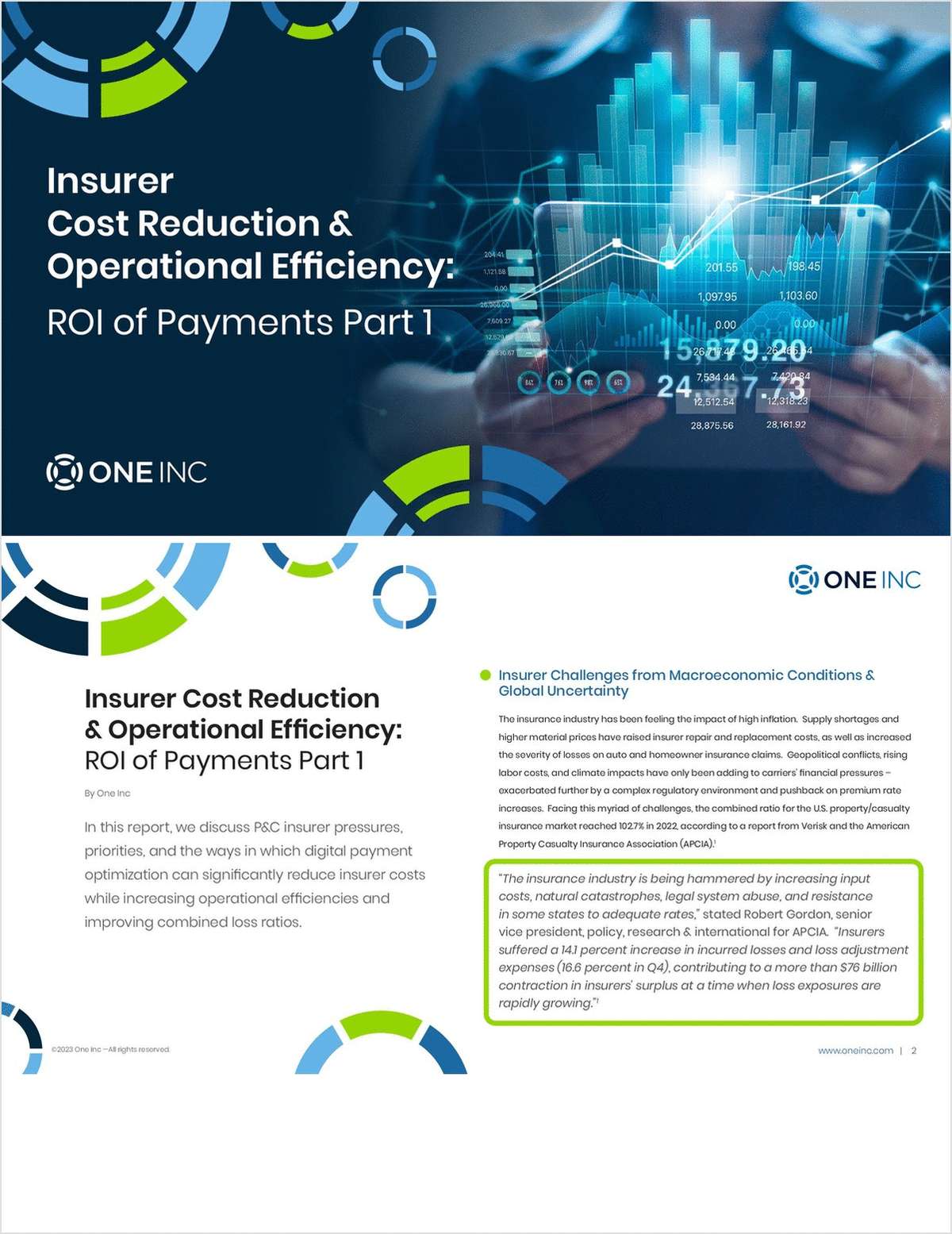NU Online News Service, Sept. 2, 11:33 a.m. EDT
Despite a broad consensus among insurers that climate change will have an impact on extreme weather events, few companies can outline their plan to manage the associated risks and opportunities, according to a report on a National Association of Insurance Commissioners’ (NAIC) survey.
Large global insurers are more likely to respond to climate change because of their internal resources than are smaller insurers, which rely on external models and outside expertise, according to the report.
The report, titled “Climate Risk Disclosure by Insurers: Evaluating Insurer Responses to the NAIC Climate Disclosure Study,” was released by Ceres, a non-profit organization that leads a national coalition of investors, environmental organizations and other public interest groups working with companies to address sustainability challenges such as global climate change and water scarcity.
.jpg) The study was based on climate-risk disclosures by insurers for the NAIC.
The study was based on climate-risk disclosures by insurers for the NAIC.
In early 2009, the NAIC appeared on track to approve a mandatory climate-risk disclosure standard for insurers.
While the standard was later weakened, some key states with significant market share--California, New York, New Jersey, Oregon, Washington and Pennsylvania--moved forward with it.
With some exceptions, the survey finds that while many insurers believe climate change is a coastal problem, aggregated losses are being driven by smaller, non-modeled events, including floods, droughts, snowstorms, hailstorms and tornadoes.
The findings of the report are “illuminating and disillusioning,” Mindy Lubber, Ceres president and director, Investor Network on Climate Risk, writes in the report’s forward.
Lubber adds that while the survey reveals “a broad consensus among insurers that climate change will have an effect on extreme weather events, only 11 of the 88 companies reported having formal climate-risk-management policies in place, and more than 60 percent of the respondents reported having no dedicated management approach for assessing climate risk.”
Sharlene Leurig, author of the report, says in a conference call that while insurers are some of the world’s largest investors, controlling $23 trillion in assets, they are also “uniquely vulnerable to the affects of climate change, from more extreme weather to shifting disease factors.”
She adds that, “given the industry’s role as a messenger of risk, insurers also have a unique ability to help other economic actors identify their risks and manage them to prevent loss.”
She observes that while a number of insurers have for about a decade warned their competitors and clients about “the urgent need for insurers to adapt their business models to prevent unmanageable losses to the industry, very few have publicly disclosed their plans for making their business, their clients and shareholders less vulnerable to climate change.”
After Hurricane Katrina, she notes, several quiet hurricane seasons have made it “easy for insurers, regulators and shareholders to turn their attention to other pressing issues,” such as the global economic depression.
But 2011, she says, is a “painful and important reminder that a changing climate will inflict damage across the U.S.”
In the U.S., she says, the reminder is that climate change will not just be a coastal problem, as some insurers believe. The major losses insurers and communities have experience this year “are largely from inland storms.”
She adds, “Unfortunately, science is telling us that more years are likely to look like 2011. But still, too many insurers are modeling using historical weather data that’s increasingly irrelevant to a changing climate.”
The resulting damage to communities and shareholders, she says, suggests that insurers’ “existing efforts to understand changing extremes, to price them appropriately, and to work with customers and regulators and policymakers to manage risks so insurance can continue to do its job have not been enough.”
She cites the study, noting that more than 60 percent of respondents have “no dedicated management approach for assessing climate risk.”
While more than half of insurers discussed potential financial risks from climate change, she says, “only 18 percent outlined the way their company is adapting capital allocation or pricing to manage those risks.”
While a handful of insurers are addressing the risks, she adds, the vast majority of insurers in the U.S. are operating as if it’s “business as usual.”
Ceres says it would like to see annual mandatory disclosures and have insurer responses publicly available.
Want to continue reading?
Become a Free PropertyCasualty360 Digital Reader
Your access to unlimited PropertyCasualty360 content isn’t changing.
Once you are an ALM digital member, you’ll receive:
- Breaking insurance news and analysis, on-site and via our newsletters and custom alerts
- Weekly Insurance Speak podcast featuring exclusive interviews with industry leaders
- Educational webcasts, white papers, and ebooks from industry thought leaders
- Critical converage of the employee benefits and financial advisory markets on our other ALM sites, BenefitsPRO and ThinkAdvisor
Already have an account? Sign In Now
© 2024 ALM Global, LLC, All Rights Reserved. Request academic re-use from www.copyright.com. All other uses, submit a request to [email protected]. For more information visit Asset & Logo Licensing.








